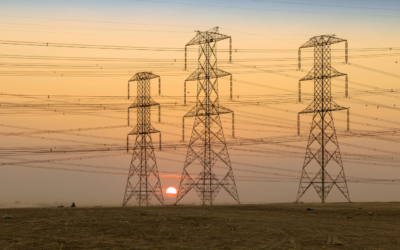On 22 May 2025, Sandbag published its response to the European Commission’s targeted survey on the future development of the Carbon Border Adjustment Mechanism (CBAM).
The position paper outlines why extending the CBAM horizontally to more products and vertically to include key precursors—alongside international transport emissions—is essential to close remaining emissions gaps. This expansion is also needed to support the phase-out of free allocation under the EU Emissions Trading System (EU ETS), which currently fails to incentivise decarbonisation in the EU.

Free allocation has long been used to address carbon leakage under the EU ETS, but it has key limitations. It only covers emissions up to benchmark levels, fails to reward cleaner EU producers, and forfeits auction revenues that could support decarbonisation. It also creates perverse incentives by making high-emission goods artificially cheap.
For example, coke —an inputs used in blast furnaces—still benefits from free allocation. This undermines the competitiveness of cleaner routes like electric arc furnace steelmaking. Replacing free allocation with CBAM charges would improve price signals and strengthen the EU’s climate policy architecture.
Free allocation creates distortions that CBAM expansion must resolve
Free allocation has long been used to address carbon leakage under the EU ETS, but it has key limitations. It only covers emissions up to benchmark levels, fails to reward cleaner EU producers, and forfeits auction revenues that could support decarbonisation. It also creates perverse incentives by making high-emission goods artificially cheap.
For example, coke —an inputs used in blast furnaces—still benefits from free allocation. This undermines the competitiveness of cleaner routes like electric arc furnace steelmaking. Replacing free allocation with CBAM charges would improve price signals and strengthen the EU’s climate policy architecture.
CBAM must expand vertically to cover all precursors—and horizontally to cover remaining ETS sectors
CBAM must include steel and aluminium scrap. Their absence allows importers to bypass carbon costs, particularly through the scrap loophole. This can be closed by:
- Tracing pre-consumer scrap emissions back to production facilities.
- Using default values and Recycling Input Rates for post-consumer scrap, as Sandbag has proposed.
In aluminium, upstream processes like alumina refining and pre-bake anodes account for major emissions not fully priced under CBAM. With reduced free allocation for alumina from 2026, equivalent CBAM coverage is needed to avoid disadvantaging EU producers.
Key precursors currently excluded—such as coke, lime and ferro-silicon, should also be added to reduce leakage risk.
Horizontally, CBAM should cover more products under the ETS. In chemicals, just 26 substances account for over 90% of sector emissions. Including key organics, upstream refinery products, and downstream polymers is both technically feasible and necessary.
CBAM must also cover international transport emissions embedded in imports to reflect their full carbon footprint.
Photo by martin-dm on Canva
Related publications
Getting Electrification Right: The broader challenge of induced emissions
Sandbag’s latest report explores how the climate impact of electricity use depends not just on how it’s generated, but also when and where it’s consumed. Using hydrogen as a case study, the report shows how poorly timed renewable electricity use can unintentionally drive-up fossil fuel emissions — and outlines smarter paths to decarbonisation.
Feedback on the EU Commission’s draft methodology for low-carbon hydrogen
For ‘low carbon’ hydrogen to truly make a positive contribution to Europe’s transition to climate neutrality, the safeguards put in place must be meaningful. Unfortunately, this does not appear to be the case in this draft delegated act.
The European Hydrogen Bank Confirms a Blind Support Approach
The Commission has recently published the Terms & Conditions (T&C) for the pilot auction...



